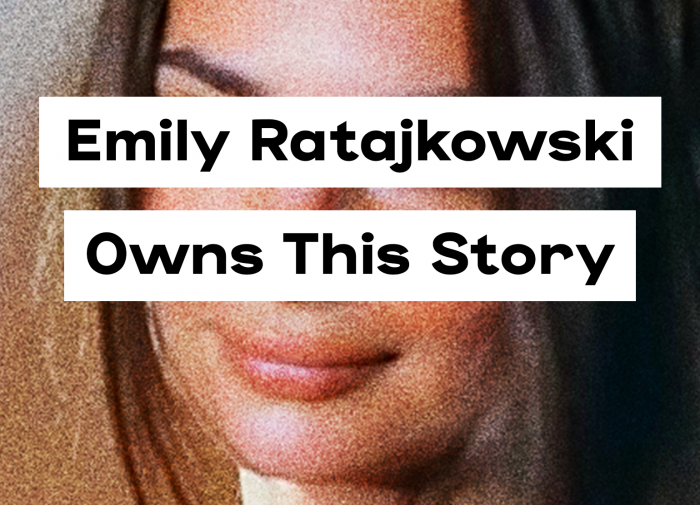Before September, you might not have heard of Web3 but now, it’s unavoidable. Web3, a term that refers to a future version of the Internet that’s built on the blockchain (an immutable, decentralized digital ledger), could change the game for digital creators by giving them more control over—and a bigger stake in—their work.
While Web 2.0 companies like Twitter, Facebook, and YouTube revolutionized the Internet’s front-end experience, Web3 applications can redefine the backend, giving users new ways to monetize and distribute their content, music, art, and more. While Web3 is still in the initial stage of its development, several applications have emerged as early leaders, attracting the attention of digital creators. Here are a few you’ll want to know about.
A look at the future of creator economy
“Some would call it an alternative to YouTube,” Jeremy Kauffman said. “We like to think it’s the successor.” Kauffman is referring to Odysee, the Web3 video-sharing company he helms as CEO. On Odysee, each user has a crypto wallet associated with their account; creators can either set a price that users pay to watch the video, or simply receive tips from engaged fans. Visitors to the site might notice the striking UX similarities to YouTube—it’s impossible to avoid comparisons to Google’s video streamer. The main difference, however, is that Odysee uses blockchain technology to pay its publishers and give them more autonomy, as their content isn’t subject to the same amount of moderation that YouTube provides.
“We do think that YouTube is far too strict,” Kauffman said.
And so unlike YouTube, Odysee promises creators that their videos won’t be removed, so long as they abide by community guidelines that ban hateful, violent, explicit content. The site last reported 8.7 million monthly users in December 2020.
Vocal proponents like entrepreneur (and Mark Zuckerberg foe) Tyler Winklevoss claim that Web3 sites like Odysee will allow creators to own their content, monetize their data, and decide what they want to do with it. “A central party should not play referee,” Winklevoss told Decrypt, a cryptocurrency news organization. ”Rules should be made by a platform’s community of creators and users, not a small group of executives cloistered in Silicon Valley.”
Will Web3 help writers monetize their content?
Web 2.0 publishing platforms like Medium and Twitter made it possible for anyone to create content online (and sometimes even get paid for it!).
Medium once even paid content creators based on the amount of “claps” an article garnered. But in 2019, Medium changed its policy without warning, and instead paid writers based on how much time readers spent viewing their articles. One writer speaking to Digiday said the change reduced his monthly earnings by 1,000 percent.
In Web3, writers set the rules regarding how they’re paid, rather than relying on an intermediary to set those rules. Mirror.xyz, a Web3 publishing platform, is like “a secret society for writers that spreads by word of mouth,” according to Tim Denning, a writer for Business Insider.
Denning described it as “secret” because, prior to this past October, the platform’s community voted on the writers it wanted to publish. Since then, however, Mirror has opened publishing to anyone with an Ethereum address. On the platform, each one of a writer’s articles can be minted as NFTs, and each time that NFT is sold at digital auction, the original author earns a percentage.
Meagan Loyst, a Gen Z venture capitalist with Lerer Hippeau, has championed the platform as a more lucrative alternative to Medium for writers. “I’ve published 11 articles on Medium. Made $0. I’ve published 2 articles on Mirror, Made $1,084,” she tweeted. “In today’s world, there is 0 point in writing on Medium over Mirror.”
Will Web3 change how musicians earn a living?
The streaming revolution made it more difficult for musicians to earn a living off plays alone. But meanwhile, record companies are thriving. According to the RIAA, as of 2021, streaming accounts for 85 percent of the music business’ revenue in the United States. Artists, however, get paid a fixed rate of about $3,000 for every million plays. This system makes it difficult for artists outside the top one percent to earn a living wage off their music.
“Streaming hasn’t just upheld the gap between music’s haves and have-nots; it’s widened it,” wrote Emily Blake for Rolling Stone.
Sound.xyz has a different vision for paying creators. To solve this issue, the company gives artists full control over how they sell their music by packaging songs as NFTs. On Sound.xyz, artists sell their music without a third-party, pricing their songs at $0.003 to $0.0084 per stream.
In December 2021, Sound.xyz debuted by releasing its first 7 songs from independent artists. The songs sold out in under a minute, generating revenue for the artists equivalent to 21 million streams (approximately $63,000) in less than 7 minutes.
While Spotify and Apple Music remain the world’s leading streamers, Web3 creators envision a world in which they’re no longer beholden to third-party platforms in order to earn revenue from their work.
Will Web3 change what it means to be popular?
What if you could speculate on the social clout of your favorite (or least favorite) celebrities? BitClout, a controversial platform characterized by crypto reporter Jeff John Roberts as a “mashup of Twitter and Robinhood,” is letting its users bet on the popularity of celebrities such as Elon Musk, Justin Bieber, and Barack Obama.
Alex Peters, a writer for Dazed, describes it as a platform that lets people gamble on people’s influence. “Think of BitClout as a stock market for people and their reputations,” he wrote. “The value of someone’s creator coin is designed to rise and fall depending on the ‘social clout’ of the person in question.”
As of today, Musk’s token is the most expensive on the platform, trading at about $11,000 per coin at the time of publishing. Meanwhile, a coin for Tiffany Trump, the daughter of the former President, can be purchased for just about $250.
BitClout’s pseudonymous founder, known only as “diamondhands,” claims that Musk’s price reflects his social value. “All the positive things you put out in the world will cause people to like you and buy your coin,” he said. “You can monetize pent up enthusiasm for you, and let fans ride the rocket ship with you.”
Seventeen-year-old Sigil Wen is one of the people who have invested in social profiles on BitClout. He first began by investing in two TikTok creators with Bitcoin loaned from his mother. Within a few weeks his picks became internet stars, and he profited $6,000. Since then has continued speculating on creators, and his portfolio is worth over $1.5 million, according to a New Yorker profile.
For now, the clout has let people trade online personalities like stock, but it remains to be seen if BitClout’s reputation will sink or moon.
Will Web3 replace Big Tech?
In short, it seems unlikely. Annie Zhang, the host of the podcast “Hello Metaverse,” argues that there are certain Web 2.0 platforms that are unquestionably useful and important without using the blockchain—platforms like Discord and Twitch, which allow creators to broadcast and communicate with their fans.
Sean Linehan, the CEO of a career coaching service, expects that rather than bringing about Big Tech’s demise, Web3 will just alter consumer expectations a bit. “Web 3.0 won’t replace Web 2.0 technology,” Linehan said. “Like its predecessor, the new capabilities will reshape what you will do on and expect from the web.”
“I’m not in a position to say who will win,” said Mat Dryhurst, an artist and part-time lecturer at New York University. “But Web2 companies will be folding Web3 ideas into their services to stay relevant.” In fact, we’re seeing that happen already. Twitter, for one, has formed its own Web3 team, tasked with exploring crypto payments, creator monetization opportunities, and decentralizing social media.
While no one can predict the future, Web3 is still in the early days of its development. The space has a long way to go, but the promise of these projects is reminiscent of the early days of the internet. In the early 2000s, you couldn’t have predicted the extent to which the Internet would weave itself into the fabric of our lives unless your last name was Gates or Jobs. The same is true for Web3. While we’re still in the initial phase of Web3 developments, it has captured creators’ imaginations.



